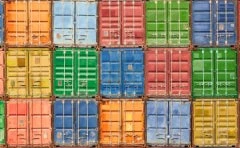
Outward looking strategies have been used by most countries that have succeeded in their transition toward emergence. East Asian tigers and dragons have witnessed a tremendous and sustained boom in their exports, as have emerging countries like Chile, Tunisia, Botswana, and Mauritius. Even fast-growing ‘big’ countries such as Brazil and China have relied on world markets.
What might surprise some though is that Tanzania’s export performance in fact exceeded that of Brazil, Tunisia, Mauritius, Malaysia, Korea, and Thailand between 2000 and 2012. Among countries that did better were China and Uganda.
Tanzania's total merchandise export grew five-fold reaching US$5.2 billion in 2012. This rapid growth has been driven by:
- Higher prices for Tanzanian’s products on world markets, accounting respectively for two-thirds of the increase in traditional agricultural products (coffee, tobacco, sisal, etc.).
- The emergence of gold – rising from US$383 million in 2002 to over US$2 billion in 2012.
- Higher manufacturing exports – growing from seven per cent of total merchandise exports in 2002 to 20 per cent in 2012, albeit with a peak of 26 per cent in 2010.
- Diversification of markets away from EU (down from approximately 50 to 30 per cent of total exports) toward Asia (i.e. up from 23 per cent to almost 30 per cent) and, above all, African countries (up from approximately less than 10 per cent to over 30 per cent) between 2000 and 2011.
The fast expansion of Tanzania’s exports is good news for those who believe in outward-looking strategies for sustainable economic development. Local firms are able to complement the limited domestic demand by selling their goods to consumers abroad. In the process, they get to learn new things from their foreign supply and marketing networks.
Foreign competition can also generate a healthy dynamism because exporting firms have to adjust to survive.
However, Tanzania’s export performance also needs to be qualified on three counts. First, the rapid annual growth rate of 15 per cent observed between 2000 and 2012 has come from a very low starting point (the share of goods and services exports in the GDP was only around 13 per cent in Tanzania against over 60 per cent in Malaysia, Thailand, and Mauritius).
Secondly, exports remain concentrated as gold now counts for over 40 percent of total merchandise exports. As a result, a sudden drop in world gold prices by 30 per cent would reduce Tanzania’s total merchandise exports by almost 15 per cent – a serious impact.
Finally, the vast majority of merchandise exports are low value-added products such as minerals and unprocessed agriculture goods which have minimal direct impacts on jobs and technology development in the domestic economy.
These figures raise a number of questions at the core of the theories on using exports as a driver of growth in Tanzania:
- Should the promotion of exports be a national priority for Tanzania?
- How can Tanzania further promote expansion of its export sector? Should specific products or markets be targeted?
- What are the most critical barriers to exporting by local firms?
- What are the risks associated with an outward-looking strategy?
Source: The World Bank's World Development Indicators and Bank of Tanzania’s statistics. All are publicly available.




Join the Conversation